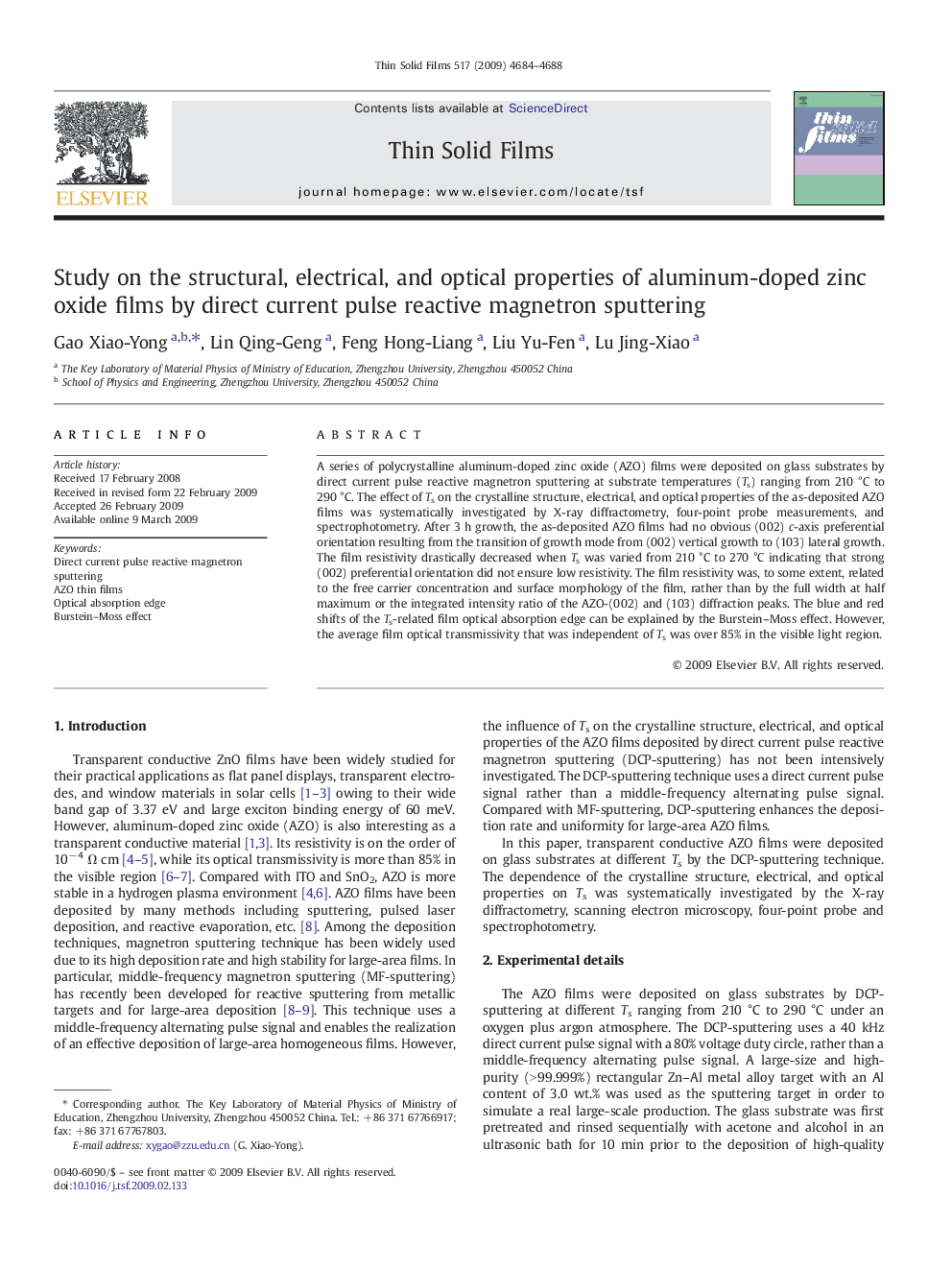| Article ID | Journal | Published Year | Pages | File Type |
|---|---|---|---|---|
| 1669208 | Thin Solid Films | 2009 | 5 Pages |
A series of polycrystalline aluminum-doped zinc oxide (AZO) films were deposited on glass substrates by direct current pulse reactive magnetron sputtering at substrate temperatures (Ts) ranging from 210 °C to 290 °C. The effect of Ts on the crystalline structure, electrical, and optical properties of the as-deposited AZO films was systematically investigated by X-ray diffractometry, four-point probe measurements, and spectrophotometry. After 3 h growth, the as-deposited AZO films had no obvious (002) c-axis preferential orientation resulting from the transition of growth mode from (002) vertical growth to (103) lateral growth. The film resistivity drastically decreased when Ts was varied from 210 °C to 270 °C indicating that strong (002) preferential orientation did not ensure low resistivity. The film resistivity was, to some extent, related to the free carrier concentration and surface morphology of the film, rather than by the full width at half maximum or the integrated intensity ratio of the AZO-(002) and (103) diffraction peaks. The blue and red shifts of the Ts-related film optical absorption edge can be explained by the Burstein–Moss effect. However, the average film optical transmissivity that was independent of Ts was over 85% in the visible light region.
